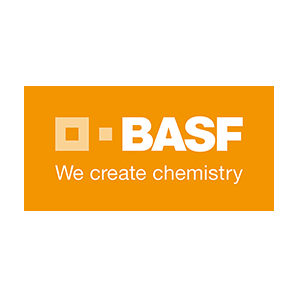 BASF is the largest chemical company in the world with a portfolio ranging from plastics, agricultural products to oil and gas. BASF employs over 100,000 individuals and has customers in over 200 countries. As a result, BASF has an extensive supply chain with around 30,000 different raw materials purchased from more than 6,000 suppliers. BASF’s purpose is to “create chemistry for a sustainable future”, and believes chemistry is a key enabler to help ensure future generations have sufficient resources.
BASF is the largest chemical company in the world with a portfolio ranging from plastics, agricultural products to oil and gas. BASF employs over 100,000 individuals and has customers in over 200 countries. As a result, BASF has an extensive supply chain with around 30,000 different raw materials purchased from more than 6,000 suppliers. BASF’s purpose is to “create chemistry for a sustainable future”, and believes chemistry is a key enabler to help ensure future generations have sufficient resources.
BASF has implemented multiple programs up and downstream of its operations, and across regions and sectors. One tool used for its nutrition and health business is a program called SET – applied sustainability™, which analyzes the product life cycle along the entire feed and food value chain: from the use of raw materials through to production and all the way to consumption by the end-consumer and finally disposal.
The SET program takes both a qualitative and quantitative approach to assessing the value chains of BASF’s products and those of its customers. A “hot spot perception analysis” is conducted first, which is a qualitative assessment of sustainability perceptions and concerns of stakeholders (e.g. external interest groups and end-consumers), such as labour and human rights, labeling, water use or packaging waste. This identifies improvement opportunities. A quantitative “eco-efficiency analysis”, based on ISO 14040 and 14044 standards for ecological evaluations, is also conducted. Through these steps potential areas for optimization along the value chain are identified, such as evaluation of where the largest water consumption occurs and determining the optimal reduction in bottle weight. The SET model has been used in 14 running and implemented projects.
SET was used to help a meat production company determine an extensive CO2 footprint for their pork, beef and veal products and identify life cycle changes that could be made to reduce CO2. These changes included replacing imported barley with domestic oil-seed rape which requires less fertilizer and new technologies in the stall to reduce energy consumption. These measures were visibly successful: A review of the values for pork carried out three years later showed a reduction of three percent in the annual amount of greenhouse gas emitted to the earth’s atmosphere.
BASF’s comprehensive approach enables whole-chain traceability, resource optimization, product innovation, and third party verification of customer eco-claims. This positions BASF customers to achieve product differentiation and competitive advantage – contributing to the chemical company’s value proposition in the marketplace.

Value-Chain Influence
Take responsibility for sustainability outcomes of their value chain, both up and downstream of their operations, and across regions and sectors.
